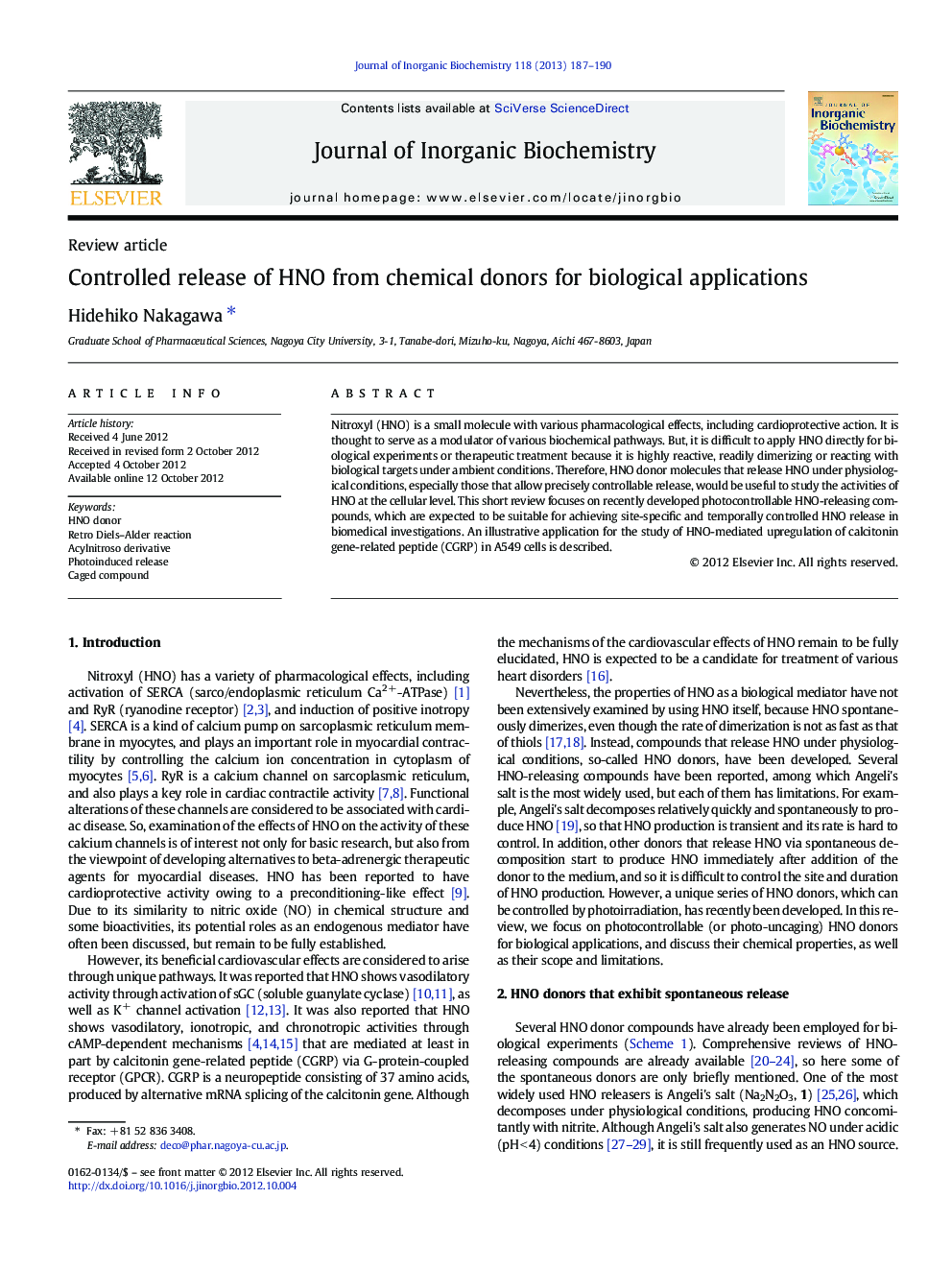| Article ID | Journal | Published Year | Pages | File Type |
|---|---|---|---|---|
| 1315921 | Journal of Inorganic Biochemistry | 2013 | 4 Pages |
Nitroxyl (HNO) is a small molecule with various pharmacological effects, including cardioprotective action. It is thought to serve as a modulator of various biochemical pathways. But, it is difficult to apply HNO directly for biological experiments or therapeutic treatment because it is highly reactive, readily dimerizing or reacting with biological targets under ambient conditions. Therefore, HNO donor molecules that release HNO under physiological conditions, especially those that allow precisely controllable release, would be useful to study the activities of HNO at the cellular level. This short review focuses on recently developed photocontrollable HNO-releasing compounds, which are expected to be suitable for achieving site-specific and temporally controlled HNO release in biomedical investigations. An illustrative application for the study of HNO-mediated upregulation of calcitonin gene-related peptide (CGRP) in A549 cells is described.
Graphical abstractA photo-controllable HNO donor is introduced and its application for study of HNO-mediated upregulation of calcitonin gene-related peptide (CGRP) in A549 cells is described.Figure optionsDownload full-size imageDownload as PowerPoint slideHighlights► Photo-controllable HNO-releasing compounds are reviewed. ► Cellular application of a photo-controllable HNO donor is introduced. ► Photo-control of HNO release allows precise spatio-temporal control of HNO treatment. ► Photo-controlled HNO delivery induces CGRP upregulation in A549 cells.
